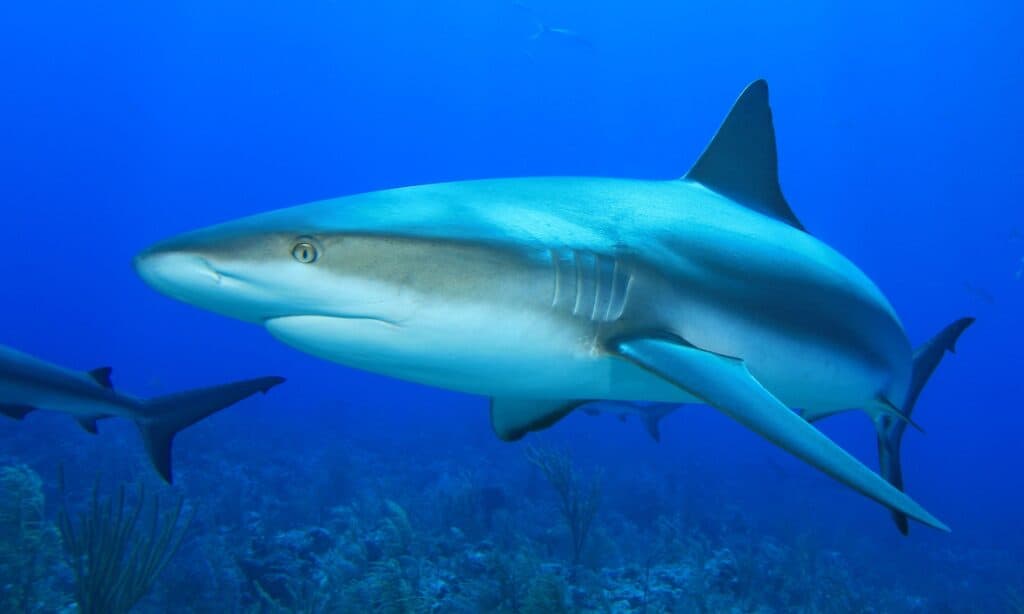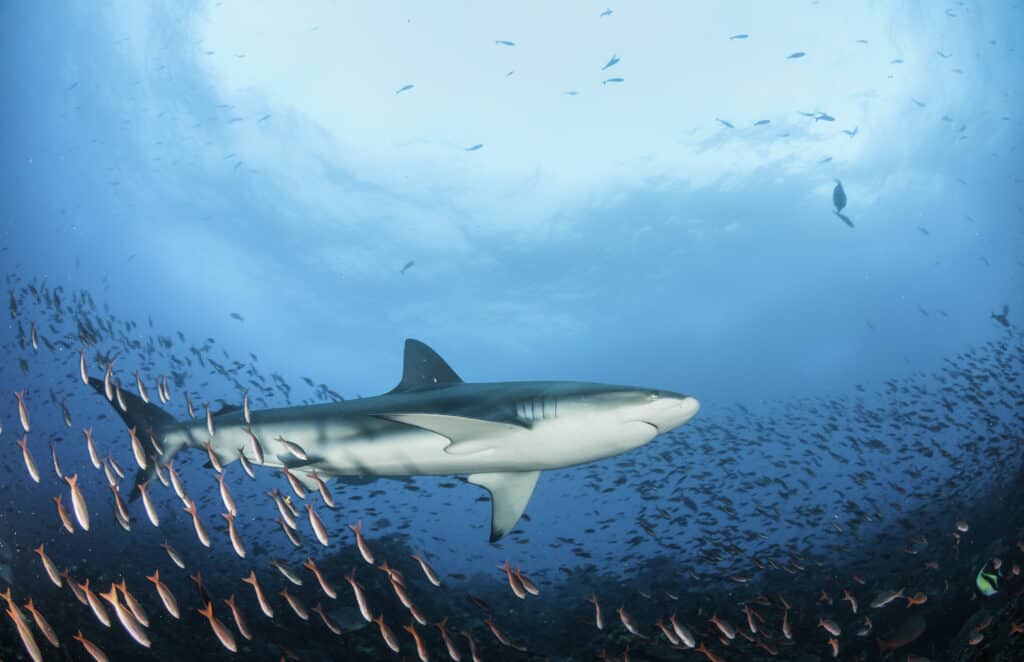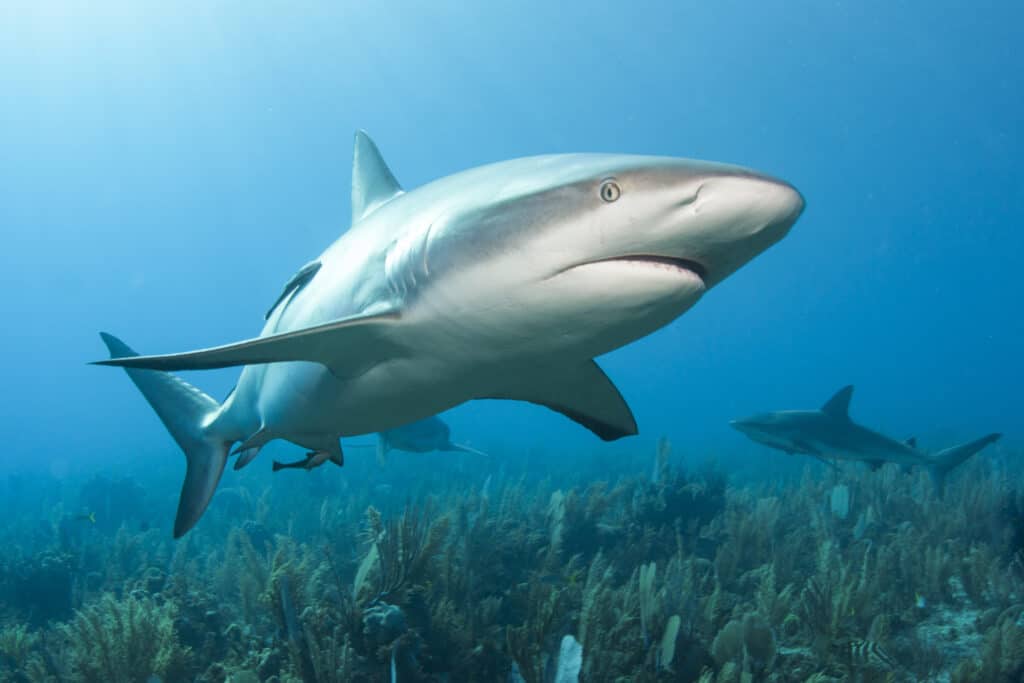Reef sharks, classified as one of the most important species in the world by the World Wildlife Fund, can grow to about 5 to 10 feet long. They are interesting species of shark that have unique features. For example, they are placental animals which is something uncommon in fish.
From their name, you can tell that they are the apex predators on coral reefs. But what part of the world are they found in? Where do reef sharks live? This article discusses the reef shark location and more.
Where Do Reef Sharks Live?

iStock.com/richcarey
The different species of reef sharks dwell in tropical waters around the globe. The name indicates what part of the waters you are most likely to find these fishes; the coral reefs. However, they don’t exist in all coral reefs worldwide; they have specific areas and locations where they live. Below are the five different species of reef shark and their common location around the world.
1. The Caribbean Reef Shark (Carcharhinus perezi) gets its name from its popular dwelling place. This species is seen mainly in the Caribbean Sea. They live and move along the Gulf of Mexico to Panama.
2. The Gray Reef Shark (Carcharhinus amblyrhynchos) lives in various open waters worldwide, however, they are more common in the Indian Ocean. Some specific areas in the Indian Ocean where you find reef sharks include the coast of Madagascar to India. The northern part of South Africa is another common area to find this type of shark.
3. The Galapagos Shark (Carcharhinus galapagensis) is a unique species of reef shark. They prefer warm parts of the oceanic waters. These fishes are also common on the continental shores of Colombia, Bermuda, and the eastern parts of Australia. Hawaii, which is home to many species of sharks, also has a number of Galapagos sharks living in its waters.
4. Whitetip Reef Sharks (Triaenodon obesus) are commonly found on the Indo-Pacific coral reefs, occurring as far west as South Africa and as far east as Central America. The geographical site stretches from South Africa to Mexico and Panama. They are found on or near the bottom in clear water at a depth of up to 131 feet.
5. The Blacktip Reef Shark (Carcharhinus melanopterus) lives majorly on the coastlines of the Pacific Ocean. Common areas along the ocean include the shores of Japan, the Philippines, and the northern parts of Australia.
Can Reef Sharks Hurt Humans?

wildestanimal/Shutterstock.com
Reef sharks are shy and gentle fish; they only attack humans in extreme circumstances. Admittedly, the different species have varying levels of aggression. They can bite when they face danger from humans. However, these bites are rarely fatal.
Not being instinctively aggressive is a striking difference they have from other sharks like bull sharks that tend to attack humans aggressively. However, they are not precisely like whale sharks that do not show any aggression toward humans. They attack when there is a need to protect themselves.
Are Reef Sharks Endangered?
Reef sharks have gradually been declining due to overfishing for their meat and fins. For this reason, some of them, like the Caribbean and the gray reef sharks, are considered endangered, while the whitetip and the blacktip reef sharks are classified as “vulnerable.” Galapagos sharks, on the other hand, are considered “least concern.”
Why Are Reef Sharks Important?

Konstantin Novikov/Shutterstock.com
Reef sharks and other types of sharks feed on other fish in the coral reefs. They have few predators and are at the top of the food chain. Their consumption of other fishes helps maintain balance in the coral reefs.
There is a need to ensure the marine ecosystem remains intact and balanced. Overpopulation of one type of fish over the other will disrupt that balance. The presence of reef sharks helps ensure that that doesn’t happen.
Reef Sharks Adaptations and Behavior
The different species of reef sharks have developed various adaptation skills to survive. Some of the adaptive features are similar to other species in the group. Let’s take a general look at these features.
Gray reef sharks use their color gradient to blend well with their environment. The gray color starts with a dark shade on the head. The shades get lighter like a gradient, as it goes down to the fish’s tail.
Interestingly, gray reef sharks have a body pattern that they use to warn prey and predators about an attack. The shark swims side to side, probably in a bid to look bigger. The Galapagos shark also does something similar to ward off attackers.
Blacktip reef sharks, like gray reef sharks, also use color patterns to blend well with the environment. This time, it is not a gradient but a combination of two colors. The back has black colors that blend with the dark appearance of the reefs where they usually live. On the other hand, the belly has a white color to keep predators confused. The belly resembles the white light that shines from the sun on the water.
Whitetip reef sharks are able to conserve energy while hunting. How is this done? They save their energy by staying quietly in the dark parts of the reefs and lying in wait for their prey to come around. One feature that helps them achieve this is the movement of their gills.
Whitetip reef sharks move their gills around in the water while the rest of the body stays still. The movement creates waves and patterns that hide the shark’s presence. It also makes it difficult for any prey to see the shark in the reef until it is too late. Another added adaptation is that they hunt with electro-receptors. These receptors allow them to hunt efficiently in the dark. The energy saved becomes useful if the whitetip reef shark is being hunted. The fish can easily escape.
Finally, the Caribbean reef shark can detect low-frequency sounds in the water. They have evolved to hunt at the bottom depths having an extrasensory gland that allows them to hear extra low-frequency sounds, making hunting for fish easier.
Up Next:
Mako Shark Location: Where Do Mako Sharks Live?
Tiger Shark Location: Where Do Tiger Sharks Live?
Whale Shark Location: Where Do Whale Sharks Live?
The post Reef Shark Location: Where Do Reef Sharks Live? appeared first on AZ Animals.
from Animal News, Facts, Rankings, and More! - AZ Animals https://ift.tt/8Njz0Ln